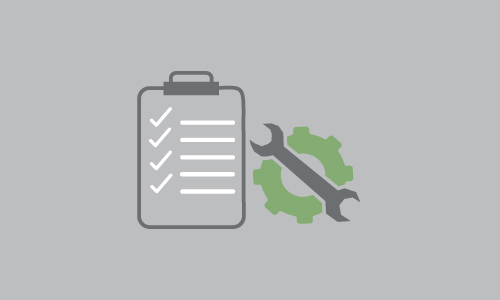Large manufacturers must adhere to strict emission limits set by the Environmental Protection Agency (EPA) and the Clean Air Act. In order to meet these standards, some plants must reduce the number of harmful chemicals used during the production process. However, facilities emitting high volumes of Volatile Organic Compounds (VOCs) as exhaust must turn to Pollution Control Equipment to minimize emission levels.
The pressure that manufacturers face to meet emission standards, keep overhead costs low, and satisfy production deadlines can mean they pay less attention to maintenance. However, taking more care to monitor and maintain pollution control units can lead to more efficient running costs and fewer repairs in the future. The most valuable maintenance tips are often preventive. By staying one step ahead of the issue, manufacturers can keep units working more efficiently for longer.
Top Maintenance Tips for Pollution Control Equipment
Both simple and complex maintenance issues can be prevented or fixed by plant personnel performing regular checks. Understanding how the system works and keeping the unit clean can improve the life of the entire machine. Pollution control units work around-the-clock, which means they need regular checkups to ensure efficiency. The following maintenance tips are applicable to any manufacturing plant using pollution control equipment.
- Train onsite workers to operate and clean the specific machines installed in the facility. While it may be beneficial to hire professional technicians to fix larger, more pressing issues, training onsite staff to perform regular maintenance tasks can help reduce repairs and save money. The initial cost of training workers may ultimately out-weigh the fees of relying on outside maintenance firms.
- Perform regular tests to ensure the unit is working efficiently. Testing the alarm systems, filtration units, and tubing can help workers spot potential issues and fix small errors before they become problematic.
- Recalibrate gauges and control panels regularly. If left unchecked, gauges may produce misleading results or fail to alert personnel of serious malfunctions.
- Stock spare parts onsite to reduce the time and cost associated with ordering replacement items. Depending on the location of the facility, it may take time to have new parts delivered and installed. Therefore, by keeping essential parts nearby, plant personnel can quickly replace faulty equipment without interrupting production.
- Keep a record of the unit’s efficiency. By tracking the output of each unit, personnel can better recognize dips in productivity, which may be a symptom of a larger issue.
Maintaining Specific Parts
Every pollution control unit contains complex instruments. Some parts may require more regular maintenance than others. For example, the filtration media in HEPA filters can be damaged by high temperatures or humidity. Plant personnel can help prevent the deterioration of these filters by monitoring the surrounding air quality and correcting any potential peaks in temperatures. Furthermore, the filtration media of a HEPA filter cannot be cleaned and must be changed regularly.
By understanding the unique maintenance issues of specific parts within each unit, plant personnel can increase the system’s efficiency and prolong the life of the machine.




